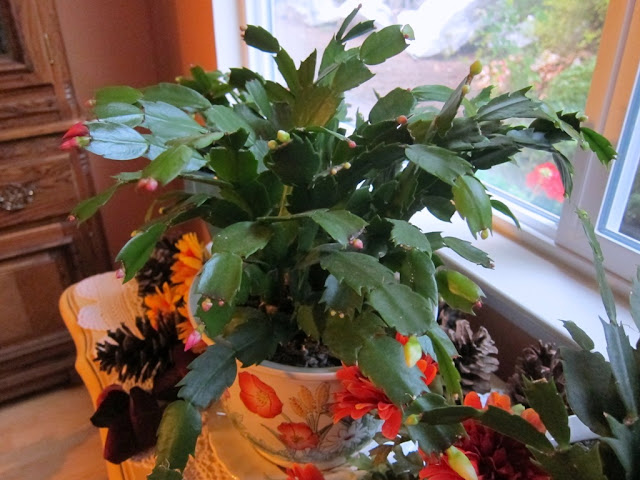But, maybe not. I did not know that there are three different kinds of holiday cacti. They are Thanksgiving Cactus, Christmas Cactus and Easter Cactus.
These photos are from my home from years past. This year all three plants are setting buds and there are three blossoms that are open. OH, SO BEAUTIFUL! This years photos to come to you when the plants are in full bloom.
Some of the following information is from the website, Gardening Know How
The three common holiday cacti, named for time of year the blooms appear, include Thanksgiving cactus, Christmas cactus and Easter cactus. All three are easy to grow and have similar growth habits and care requirements.
The three common holiday cacti, named for time of year the blooms appear, include Thanksgiving cactus, Christmas cactus and Easter cactus. All three are easy to grow and have similar growth habits and care requirements.
Although these familiar cacti are traditionally available in shades of red, today’s holiday cactus varieties come in magenta, pink and scarlet, as well as yellow, white, orange, purple, salmon and apricot. Although all three are native to Brazil, Thanksgiving and Christmas cactus are tropical rain forest plants, while Easter cactus is native to Brazil’s natural forests.
The three types of Christmas cactus plants (holiday cacti), are primarily recognized by the time of bloom. Thanksgiving cactus blooms in late autumn, about a month before Christmas cactus. Easter cactus displays buds in February and blooms around Easter.
Different types of holiday cactus are also differentiated by the shape of their leaves, which are actually plump, flat stems.
I have not been able to distinguish the type of cactus that I have by the leaf shape. They all look the same to me. And, maybe they are all the same!
Thanksgiving cactus is often known as lobster cactus because the edges of the leaves are hooked, giving them a claw-like appearance. Christmas cactus leaves are smaller with smooth edges, and Easter cactus leaves have a more bristled appearance.
Unlike regular, desert-dwelling cactus, holiday cacti are not drought-tolerant. During active growth, the plants should be watered whenever the surface of the potting mix feels dry to the touch. Drainage is critical and the pots should never stand in water.
After flowering, water the holiday cactus sparingly until the plant completes its normal dormant period and new growth appears. A period of relative dryness is especially important for Easter cactus, which isn’t a tropical plant.
Holiday cactus prefers dark nights and relatively cool temperatures between 50 and 65 degrees F./10 and 18 degrees C.
Holiday cactus is easy to propagate by breaking off a stem with two to five segments. Set the stem aside until the broken end forms a callus, then plant the stem in a pot filled with a mixture of sand and sterile potting mix. Be sure the pot has a drainage hole in the bottom. Otherwise, the stem is likely to rot before it develops roots.














No comments:
Post a Comment
.